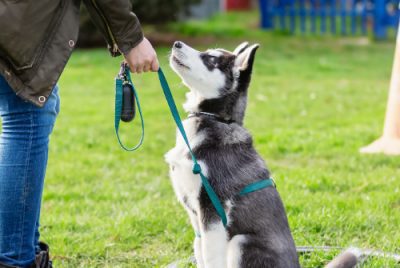Uncover Weird Facts About Dogs: Surprising Discoveries
Post Disclaimer
We may earn a commission for purchases made using our links. Please see our Disclaimer to learn more.
Weird Facts About Dogs That Will Surprise You
Dogs are interesting and have unique traits. Their sense of smell is sharp, and they have specific pooping behavior. This blog will explore their quirks’ science and impact on their lifestyle. It will also debunk myths and talk about dogs’ effect on human health. From choosing the perfect place to do their business to helping ease separation anxiety, dogs have some weird and amazing facts that you probably didn’t know about, including their incredible ability to navigate the complex subway system in search of food as stray dogs. Interesting insights about man’s best friend and their incredible dog’s sense await you!
The Fascinating Science Behind Dogs’ Unique Traits
Dogs exhibit a remarkable understanding of human year vs dog years, and a strong bond with their owners. Their complex nose print, scent receptors, and unique blood pressure set them apart. Canines can sense the earth’s magnetic field, vital human organs, and food using scent chemicals.
Unraveling the Mystery of Dogs’ Superior Sense of Smell
Dogs have a great sense of smell. They can smell chemicals and find their way using the earth’s magnetic field. Dogs get anxious when separated from humans and bond with them. Their ability to smell is amazing, making them special animals. Dogs possess an olfactory ability that surpasses that of humans. Unlike us who have a 5 million scent receptors, in our nose’s dogs boast a 300 million receptors. This remarkable difference makes their sense of smell up to 40 times more sensitive, than ours. Dogs have the capability to detect scents, including drugs, explosives and even cancer.
Check out the American Kennel Club to start unleashing your dog’s nose superpowers.
Unusual Dog Behaviors and Their Meanings
Dogs often exhibit behaviors that can be quite intriguing. They actually offer valuable glimpses into their psychological makeup. Whether it’s wagging their tail or yawning each behavior carries a message. Grasping the significance of these actions helps foster a connection, with your beloved canine companion but also unveils captivating facets of their inner world.
The Language of Tail Wagging
Dogs use wagging their tails to express emotions combining insights, from dog psychology with facts about their behavior. Families who own dogs often notice types of tail wagging.
Happy Wagging: When a dogs tail is relaxed and swaying back and forth while its body moves along with the wagging it usually indicates a contented dog. This type of tail wagging is typically accompanied by a expression.
Alternative Interpretations: If a dog holds its body upright and stiff while wagging its tail it may be signaling territoriality or discomfort with something happening around it. The tail might be. Wagged slowly indicating the dogs hesitation or unease about something. On the hand if the dogs tail is held high and vigorously moving back and forth in movements it could potentially be a sign of impending aggression.
Left versus Right Tail Wagging; A study has revealed that dogs respond differently emotionally based on whether another dog wags its tail, to the left or right. Dogs tend to become more relaxed when they observe another dog wag its tail to the right.
When dogs see another dog wagging its tail, to the left they may display signs of nervousness, stress or anxiety. It is important to observe how a dog positions its tail while wagging as it can provide insight into their communication. Additionally paying attention to aspects of a dogs body language is crucial. If you come across a dog wagging its tail, it’s advisable to assess their body language before approaching them. Prioritizing safety is essential to avoid dog bites.
Why Do Dogs Yawn When Humans Do?
Yawning is not contagious, among humans. It’s also observed that dogs yawn in response to their owners yawning. This behavior may indicate a sense of empathy and social connection, between dogs and humans. Dogs might yawn to alleviate a perceived threat or stress. For example, if someone or another animal approaches a dog the dog may avert its gaze. Let out a yawn. It’s their way of communicating that they feel uneasy or anxious but have no intention of being aggressive. Dogs employ this form of body language as a means to avoid conflicts. Yawning can serve as an indication that your dog is experiencing stress.
The Not-So-Pleasant Habit of Eating Feces in Dogs
Dogs have a tendency to eat feces for reasons as explained by the American Kennel Club. These reasons include;
- Deficiencies: Dogs may engage in poop eating behavior to make up for any lacking nutrients, in their diet. It’s crucial to ensure that your dog is receiving a nutritious diet.
- Behavioral issues: Anxiety, boredom or stress can lead dogs to eat poop. Addressing the root cause of these issues is important when dealing with this behavior.
- Instinctual behavior: Some dogs instinctively eat feces as a way to maintain cleanliness in their den and avoid attracting predators.
If you are concerned, about your dogs habit of eating poop it’s advisable to consult with a veterinarian who can help identify the cause and provide solutions.
Dog Physiology: Remarkable Facts You Probably Didn’t Know
Dogs boast a third eyelid, known as the nictitating membrane, safeguarding their eyes. They possess a sense of time, discerning their owners’ return. These remarkable dog facts demonstrate their extraordinary abilities and unique physiology.
The Curious Case of Dogs’ Three Eyelids
Dogs possess not just an upper and lower lid, but also a third eyelid known as the haw. This nictitating membrane safeguards their eyes and keeps them moist, especially when swimming. Additionally, it helps distribute tears for eye lubrication, serving as a critical part of their eye anatomy. Dogs possess three eyelids, one of which is known as the membrane or haw. This particular membrane is situated in the corner of their eyes. Serves multiple functions. It aids in generating one third of a dogs tears by hosting a tear gland at its base. Additionally, it acts as a lymph node producing antibodies, to combat infections while also helping to safeguard the dogs cornea against injuries. Normally this membrane remains invisible in dogs and cats unless they are asleep or suddenly wake up. If you happen to observe your dogs third eyelid becoming visible it might be an indication of pain or an ocular issue. Visit Vet’s Organic to learn more about the three eyelids.
Dogs and Human Interaction: Things That Might Surprise You
Dogs possess advanced animal psychology and can respond to human facial expressions. They have a keen sense of time and can recognize human voice tones, conveying emotions effectively. These family dog facts may surprise many.
Dogs’ Jealousy and its Impact on Their Behavior
Jealousy-like behaviors may be observed in dogs, especially in multi-pet homes, leading to attention-seeking actions and occasionally disruptive conduct. Understanding and addressing canine jealousy is crucial to prevent negative behavioral outcomes.
The Truth About Dogs’ “Kisses”
While often considered a sign of affection, a dog’s licking behavior is a natural instinct. It’s their way of gathering scents and exploring their human family. This interesting behavior sheds light on the fascinating dog psychology.
Interesting Insights About Dogs’ Lifestyle and Habits
Dogs boast an exceptional sense of smell, with over 300 million scent receptors. Their unique nose print is akin to human fingerprints. The oldest breeds like the Basenji trace back thousands of years, showcasing the rich history of family dogs.
The Pattern Behind Dogs’ Pooping Behavior
Influenced by the earth’s magnetic field, dogs often align north-south while defecating. Some prefer specific postures or locations, indicating a blend of instinct, learned behaviors, and environmental factors. Dogs use feces for scent marking and communication with other dogs. Dogs poop in alignment with Earth’s magnetic field, check out this article from PBS News Hour. I have always wondered why it takes them so long to find a good spot.

The Myth of Dogs Hating Mailmen
The misconception of dogs disliking mail carriers is not universally true and can vary based on individual experiences. Dogs’ reactions may stem from unfamiliarity, territorial instincts, or previous encounters, but positive interactions can help them overcome fear or anxiety towards mailmen.
Dogs’ Unexpected Ability to Learn Subway Routes
Some dogs have exhibited the capability to grasp intricate subway routes, shedding light on their problem-solving skills and cognitive abilities. The Australian Cattle Dog, known for its intelligence, particularly excels in learning and navigating subway routes. Did you know that dogs have an ability to sense the Earths field? It’s like they have their compass. A group of researchers, from Czech University of Life Sciences, Virginia Tech and Barry University conducted a study that suggests dogs might actually use the Earths field to help them navigate. The study observed that when dogs crouch down to do their business they tend to align themselves in a north south orientation, which aligns with the Earths field. Another study published in the journal eLife found that dogs have an instinct, for taking shortcuts and finding efficient paths while exploring unfamiliar areas. This remarkable navigation skill is made possible by a molecule called cryptochrome located in their retina, which gets activated by the Earths fields and helps guide them wherever they go.
Busting Common Myths About Dogs
Dogs don’t hate cats, it’s just a behavioral misunderstanding. Dominance in dogs is about social order, not dominance. The term “dog years” is a myth because aging varies by size, breed, and health.
Do Dogs Really Hate Cats?
Contrary to popular belief, dogs and cats can actually form strong relationships. The idea of dogs hating cats is a human misunderstanding of animal behavior. Dogs and cats can coexist peacefully and even become best friends.
The Misunderstanding of Dominance in Dogs
The concept of dominance in dogs is often misconstrued by humans. It is a complex behavioral issue rooted in pack behavior. Understanding the true nature of dominance in the family dog is crucial for healthy human-animal relationships.
The Reality About “Dog Years”
As humans, we like to measure a dog’s age in “dog years,” but the truth is, dogs don’t age at a fixed rate. It’s a human concept, not a scientific fact, devised to understand a dog’s lifespan. The accepted belief that one dog year is equivalent to seven years is not as straightforward as it seems. According to the American Veterinary Medical Association, the first year of a dog’s life is equal to 15 human years. The second year of a dog’s life is similar to nine years for humans. After that each subsequent human year would be roughly equivalent to five years, for a dog
Dogs and Their Impact on Human Health
The physical and emotional benefits of having a family dog are remarkable. Petting dogs can lower human blood pressure, improving overall health. This interesting fact about dogs contributes to their unique role in human psychology and well-being.
How Petting Dogs Can Lower Your Blood Pressure
Interacting with dogs has been shown to reduce human blood pressure, contributing to improved health. Touching dogs can have a calming effect, reducing human blood pressure. Petting a family dog, like a golden retriever, can be a therapeutic and enjoyable experience.
The Dangers of Canine Obesity for Dogs’ Health
Canine obesity poses a significant threat to dogs, impacting their overall health and quality of life. It’s a growing concern that needs attention for the well-being of our family dogs.
Trivia: Did You Know?
Did you know that dogs sniff each other’s behinds to gain vital information about one another? It’s their way of gathering scent cues to understand the other dog’s gender, health, and more. Additionally, dogs can be either left or right-pawed, similar to human handedness. And did you know that a wet nose helps dogs sense chemicals, aiding their search for food, mates, and more? Dogs also have unique paw pads that help them sweat and cool down, making them even more fascinating creatures. Fun fact: Bluey, an Australian cattle dog, is recorded in the Guinness Book of World Records as the oldest dog to ever live, living to be 29 years 5 months old from 1910 to 1939.
Dogs can sniff at the same time as breathing
Dogs can sniff and breathe at the same time with the Jacobson’s organ. They have about 1,700 taste buds, whereas humans have around 9,000. This unusual dog fact highlights the remarkable abilities of a pet dog’s nose.
Conclusion
Dogs are amazing animals with unique behaviors and superb senses. They have interesting traits like corn chip feet and three eyelids. Dogs show affection in various ways, including kissing and being jealous. We cleared up some misconceptions about them, such as their supposed dislike for cats and the idea of “dog years.” Additionally, dogs have health benefits by reducing blood pressure through petting. Lastly, we learned fun facts such as their ability to sniff while breathing and having left or right-paw preferences. Dogs are truly fascinating creatures that always surprise us.




